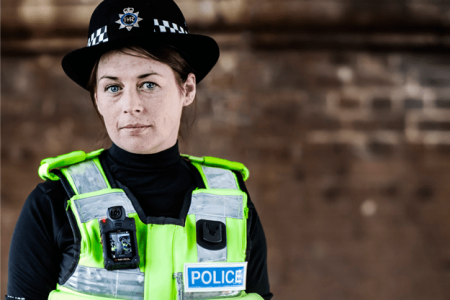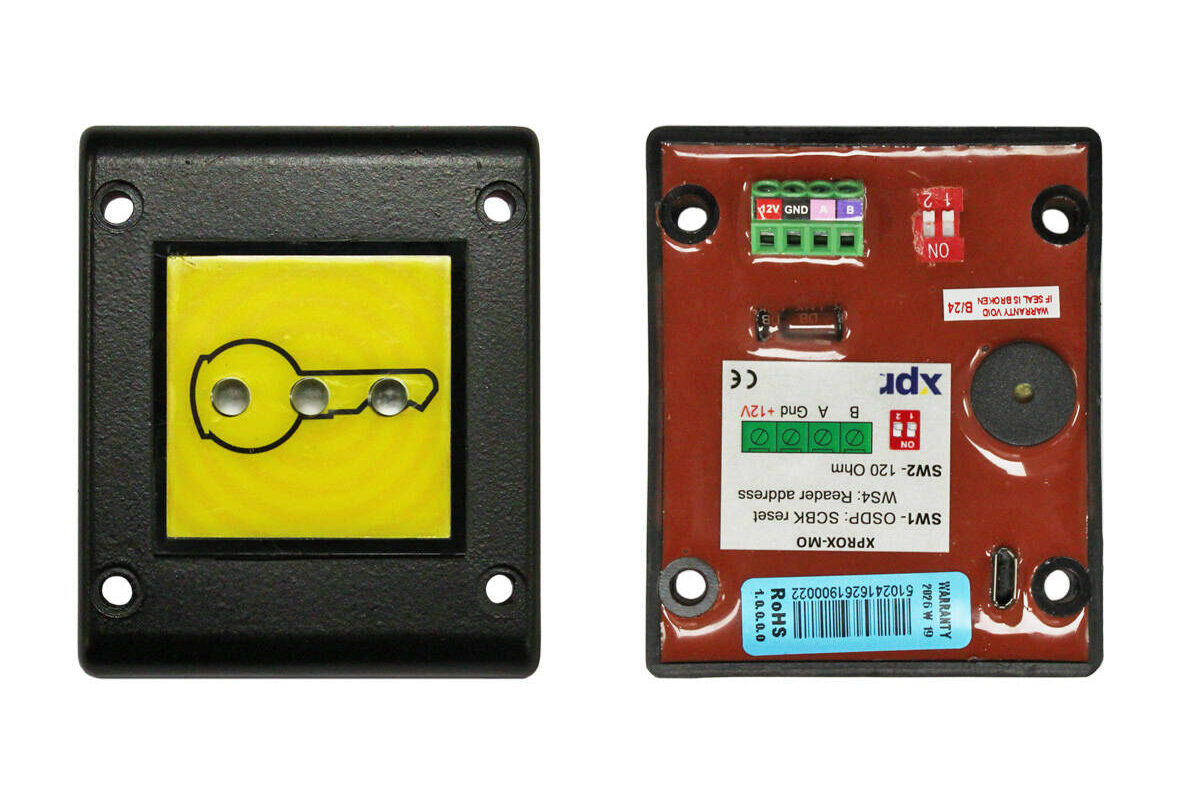Body Worn Video camera surveillance solutions on trial for police officers
Tim Compston, Features Editor at Security News Desk, finds out why Body Worn Video (BWV) camera solutions are increasingly in the frame for police officers.
We have witnessed a dramatic expansion in the take-up of body worn video camera solutions by the police across the globe, moving beyond simply being used by specialised units to force-wide deployments, numbering hundreds or even thousands of units.
Body worn video has become an indispensable piece of police equipment, in the United States we have seen this linked to a drive for greater ‘transparency’, following a series of cases of high profile incidents. Recently the Chicago Police released ‘body cam’ footage of a fatal shooting involving police officers and, now, reportedly, has instituted a policy to release such footage within 60 days. Beyond this, the US Department of Justice already has a $20 million pilot programme in the works to expand the deployment of body worn cameras. For the UK, body worn deployment has also moved into the fast lane with the Mayor of London confirming last year a massive twenty-fold uplift in the number of units deployed.
State of the market
Taking a wider perspective on the trajectory of the body worn video camera market, Oliver Philippou, a Senior Analyst at IHS, estimates that the total world market for body worn video surveillance equipment and service in law enforcement was worth $60 million in 2014. Philippou reports that IHS expects the service element to become a larger proportion of the overall market than the hardware itself by 2019: “An officer’s camera typically records between one to two hours per day. IHS estimates that this results in two to three GB of data being collected by each officer per shift.” According to Philippou this valuable data needs to be stored and managed somewhere: “Third party storage will become more commonly used over the next five years to store body worn video surveillance. This is because it is more economical and scalable with the expected growth of data storage requirements,” concludes Philippou.
Research results
Regarding the utility of body worn video, a frequently cited study, published by researchers from the University of Cambridge’s Institute of Criminology (IoC), who analysed policing with body worn video cameras in Rialto, California, in 2012, found that during a 12-month experiment – compared to the previous year – use-of-force by officers wearing cameras fell by 59 per cent and reports by officers dropped by 87 per cent. At the time the researchers said that more work was needed in this area and, four years on, a new study from the University of Cambridge’s Institute of Criminology (IoC) and RAND Europe provides more food for thought.
The latest study is said to be the largest yet series of experiments on the use of body worn cameras by the police and covered a total of 2.2 million officer-hours policing with the shift patterns [of 2,122 participating officers] split at random between those allocated a camera and those without. Interestingly, from the trials in eight police forces – including West Midlands, Cambridgeshire, and PSNI in the UK and Ventura and Rialto in California, contrary to current thinking, the rate of use-of-force by police officers on citizens was unchanged by the presence of body worn cameras.
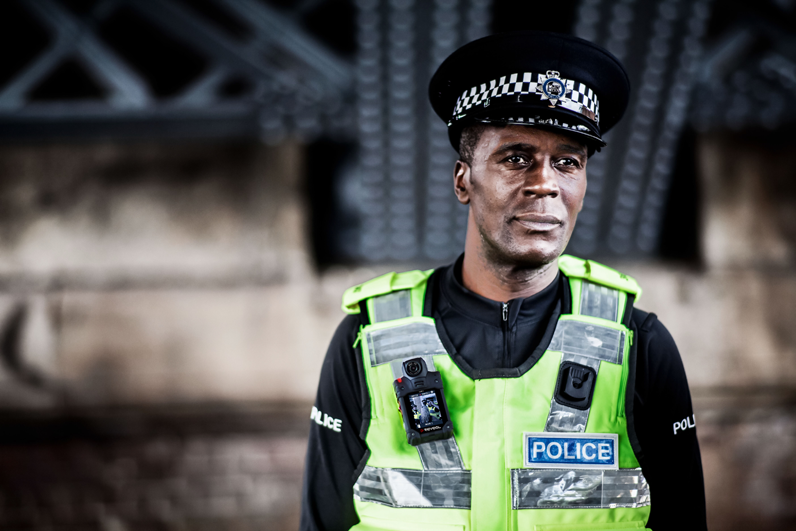
Drilling down into the detail, further analysis showed that if officers turned cameras on and off during their shift then their use-of-force increased, whereas when they kept the cameras rolling the whole time, use-of-force decreased. “If an officer decides to announce mid-interaction they are beginning to film, for example, that could provoke a reaction that results in use-off-force,” says Barak Ariel, Principal Investigator from the University of Cambridge’s Institute of Criminology. One outcome of this, according to the researchers, may be that it makes more sense for cameras to be kept on, and recording, at all stages of police-public interaction, not just when an individual officer deems it necessary.
Another headline grabbing finding from the latest study was the revelation that rates of assault against officers by members of the public was actually 15 percent higher when they used body worn cameras. Researchers say that this could be due to officers feeling more able to report assaults once they are captured on camera.
22,000 body worn for London
On this side of the Atlantic the surge in the number of body worn video cameras out in the field was underlined by the announcement, last November, that the Axon body worn video platform, from TASER International, had been selected by the Metropolitan Police Service to outfit all its frontline officers. Before the decision to go for a full steam ahead with such a massive body worn camera rollout, led by the Mayor’s Office of Policing and Crime (MOPAC) an initial 12-month pilot was conducted using 1,000 of TASER’s Axon body-worn cameras. The pilot was deemed a success, with a research study by MOPAC and the College of Policing finding that the cameras resulted in a 33 percent reduction in complaints against officers. When complete the deal with TASER will, ultimately, see 22,000 officers receiving Axon Body 2 cameras.
Commenting on the body worn video camera move, Sir Bernard Hogan Howe, Commissioner of the Metropolitan Police, stressed that such a large-scale deployment was, in his view, long overdue: “Our equipment has lagged behind the technology almost everyone has in their pockets to capture events as they unfold. Soon, more of our officers will be able to make a record of the very challenging circumstances they are asked to deal with on a daily basis.”
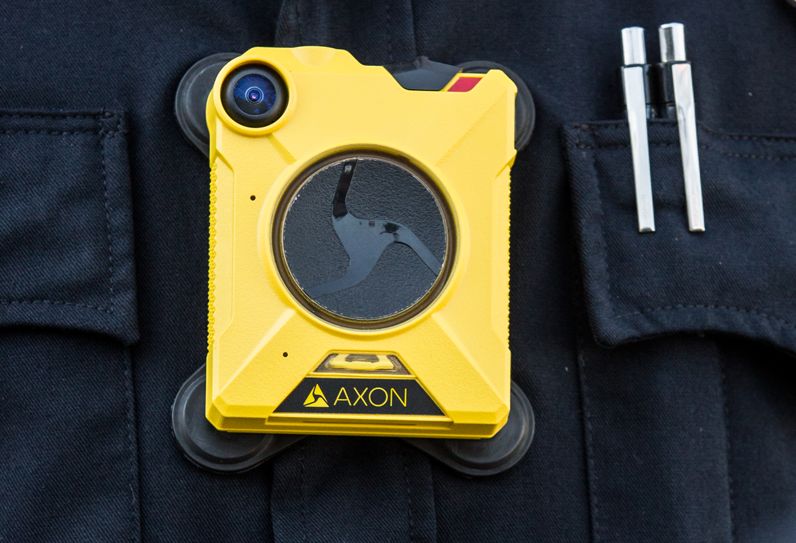
Following on from the London decision, in the North of England the third largest police force in the UK, Greater Manchester Police has confirmed that it too has decided to adopt a TASER solution. So far the force has ordered 3,148 Axon Body 2 cameras and is also subscribing to the Evidence.com platform. The initial rollout of the cameras to officers, in a variety of public facing roles, began in the spring and is ongoing as we go to press. Offering his thoughts on what the camera programme will mean for the Manchester force, Assistant Chief Constable, Garry Shewan, said: “This will allow Greater Manchester to be at the forefront of the nationwide push towards more accountable and effective police forces. Technologies such as body worn video will make up part of the policing landscape for many years to come.”
Axon answers
Talking to Sydney Sigmeth, a spokesperson for California-based TASER International’s Axon business unit, about the trends she is seeing in the world of body worn video cameras, talk soon turns to recent incidents involving police: “I would say in the US, obviously, several tragic events have taken place. These events just drive home the importance of finding law enforcement technology solutions that enhance safety and trust for police officers and the members of the community they serve.” Internationally, Sigmeth adds that terrorism is also pushing the safety of citizens higher up the agenda.

When I press Sigmeth on the features that police forces are seeking in their body worn video solutions, she is keen to make the distinction between any camera and a ‘smart camera’ which can fit into a wider ecosystem: “Over the last couple of years there has been this big focus on body cameras but I would say that anyone can make a camera. We all have one in our back pocket attached to our phone. What the police are looking for is something much more than a camera, they want a smart camera.” She adds that, number one, this means a connected camera, a camera that talks to their car or is connected to their TASER device and is connected to a network of software: “It is not just helping them [the police] capture critical evidence but to manage this data and share it, externally, in a really secure manner.”
Sigmeth is keen to reinforce the importance of data security and the steps TASER is taking here:” We have a team that is dedicated to making sure that our system and our cameras are secure and our video cameras and body cameras meet CJIS (Criminal Justice Information Services) standards. Video is encrypted while it is being translated from the camera into the cloud and it is encrypted, and secure, while at rest, while it is in storage. We have ‘evidence.com’ which is our digital evidence management system.”
Asking Sigmeth why it makes sense to offer a body worn camera that can connect to something like a TASER weapon, she responds with more detail on how this, typically, works in practice: “We have technology called Axon Signal technology that will automatically turn on a body camera when a certain trigger takes place. That trigger could be the un-holstering of an officer’s TASER CEW [Conducted Electrical Weapon] device or it could be when they turn on the siren in their squad car or when they open the car door. It [Axon Signal technology] will also help to turn on other body cameras, automatically, if there are a number of officers responding to a scene so it captures multiple perspectives.”
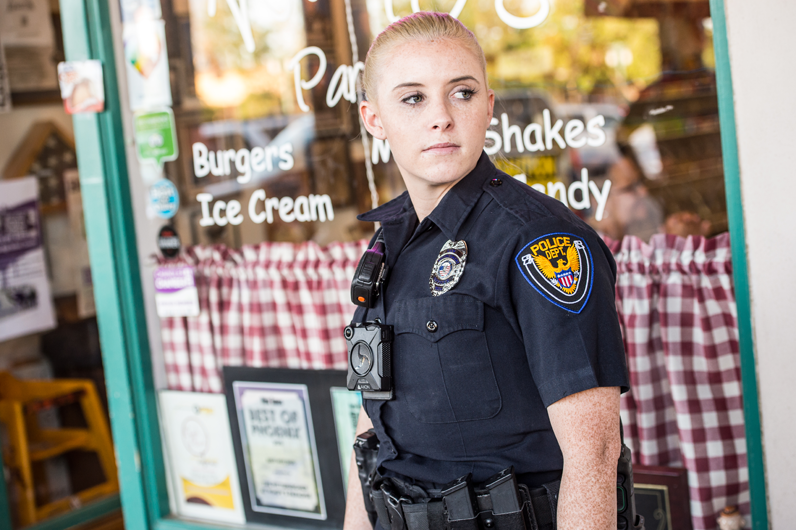
West Yorkshire reveals camera solution
Another police force joining the body worn video revolution is West Yorkshire, in this case opting to go for a solution provided by UK vendor Reveal Media. The force has agreed a contract that will see officers and staff across the county wearing the latest state-of-the-art body worn video cameras – specifically the RS2-X2 which can be attached to the torso or helmet – during their duties. This follows a pilot in the Bradford District – and participation in a University of Cambridge study – with West Yorkshire Police and Crime Commissioner, Mark Burns-Williamson, investing £2 million from a ‘Transformation Fund’ to support the project for a more substantial, phased, roll-out.
Mark Burns-Williamson reckons that body worn video cameras can play a vital role in helping victims of crime and enhancing police accountability: “The use of body worn cameras provides increased support to victims and witnesses and reduces the number of victims required to attend court. Their use also means increased benefits for police accountability and transparency which will lead to greater confidence in the police.” Burns-Williamson also anticipates gains in relation to improved evidence gathering by officers: “This will lead to better criminal justice outcomes and increased protection for officers and ensure that public complaints can be resolved more quickly and conclusively where they occur.”
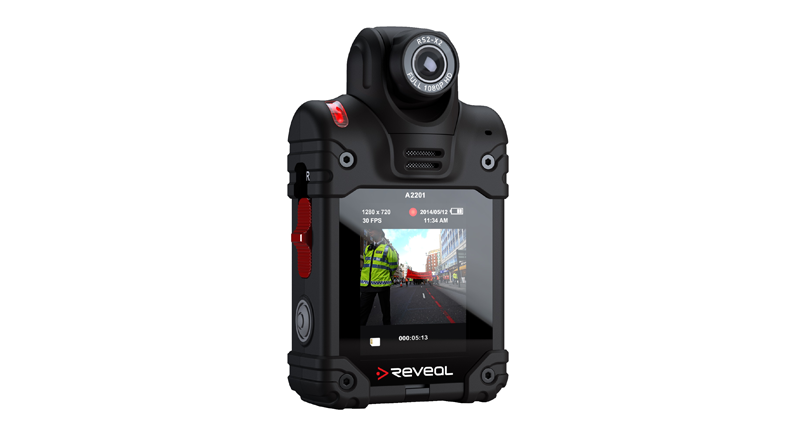
Body cam champion
One of the strongest advocates of ‘body cams’ as far as the UK is concerned is another Police and Crime Commissioner (PCC), in this case Matthew Ellis from Staffordshire who was instrumental in ensuring that all front-line police officers, PCSOs and Special Constables, across Staffordshire and Stoke-on-Trent received body cams.
Speaking to Ellis about why he went for body worn video cameras in such a big way, he says that this approach ties-in with a commitment to more open policing: “I thought wouldn’t it be great to cut-out the awful amount of time that is wasted on spurious complaints from individuals who just don’t like being arrested and have been arrested in a perfectly sensible way. We are now able to look at the pictures of what actually happened rather than just relying on the words of individuals who disagree over the particular circumstances.” A second driver for the cameras, explains Ellis, was how things like Tasers can prevent situations getting out of hand because individuals see officers carrying them: “I wondered if the same thing would happen with body worn video cameras. Early on officers were saying that in a number of incidents once they pressed the body cam’s button, and the light came on, people become much more sensible and compliant.”
A report earlier this year by the county-wide independent Ethics, Transparency and Audit Panel (ETAP) – established by Ellis – has recommended the mandatory use of body worn video for every stop and search incident in Staffordshire: “Stop and search is an important power but can seriously harm public confidence in the police when used inappropriately or without the proper rigour which is why ETAP’s recommendation that every stop and search is recorded on body cam is crucial,” says Ellis.
Scottish success
North of the border, Police Scotland has instigated its own trial of body worn video cameras from Edinburgh-based Edesix. The deployment of the VideoBadge solution, initially in Aberdeen, was directed not only at improving evidence gathering but also at increasing criminal conviction rates. According to Edesix the initial trial resulted in significant success and further investment in the VideoBadge.
Looking at some of the metrics that came out of the trial period: 95 percent of reported cases involving evidence from the cameras resulted in an early guilty plea, in addition 63 percent of civilian witnesses where not required to attend court due to the camera evidence acquired and, crucially, 32 percent of officers were not needed in court thanks to the early guilty pleas.
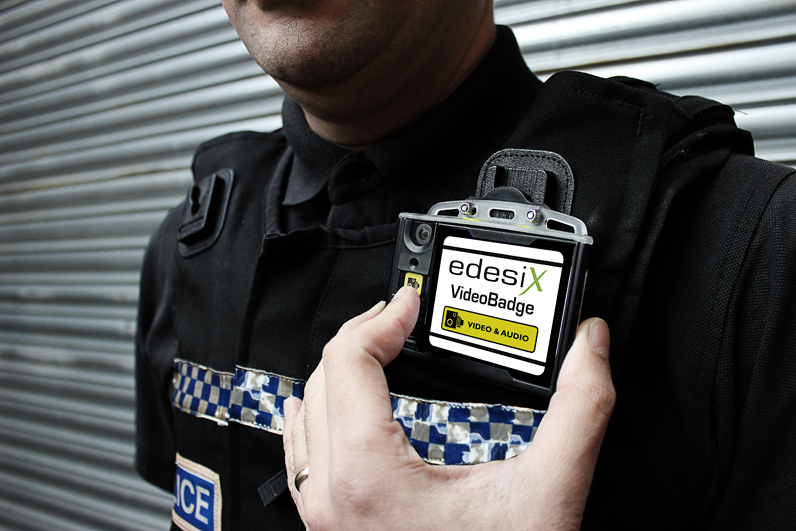
Middle East take-up
Underlining the fact that the expanding footprint of body worn video cameras is very much a global phenomenon, over in the Middle East, in May 2015, Police Chief Maj Gen Khamis Al Muzeina confirmed that Dubai Police was embarking on a trial with 80 body worn cameras. Speaking to the media at the time Gen Al Muzeina flagged-up the value of footage from these cameras. He said that this evidence could, potentially, be used where there are objections to traffic offences or a failure by officers to meet acceptable standards. For its part, Abu Dhabi Police also confirmed last year that – following two years of trials – it would be rolling out body worn video cameras to patrol officers.
Camera positioning
Considering the way that cameras are employed by armed police officers, this came under scrutiny, when the Independent Police Complaints Commission (IPCC) analysed footage from a non-fatal police shooting in London where it said that the positioning of the cameras on officers’ bodies obscured and impacted on the quality of the footage. In response the Metropolitan Police says that it is testing different positions for the cameras.
Although chest worn cameras are now predominantly issued to beat type officers or PCSOs in the UK, Adam Liardet, Managing Director at Audax Global Solutions Ltd, points out that the most recent Home Office studies, and trials, indicate that they are just not suitable for more specialised applications such as firearms officers: “Basically when you have a camera mounted on you head if you hear a noise you tend to turn your head and don’t necessarily turn your whole body.”
Returning to the frontline
On the subject of new product developments, one vendor that dipped its toes into the body worn video market last year, IndigoVision, is now moving ahead with a new model, the FrontLine 2. The company’s second generation camera offers 28 hours of encrypted on-board recording, a 130 degree lens and high fidelity audio. It is also features an IP54 rated, impact resistant casing and weatherproof micro USB. Marcus Kneen, IndigoVision’s CEO, feels that we are only seeing the tip of the body worn video iceberg and that there is plenty of scope for cameras outside of just the police: “Our body worn camera is marketed under the ‘FrontLine’ name and it really is for anyone who is in frontline services where they can be subject to aggressive behaviour from the people they are dealing with.”
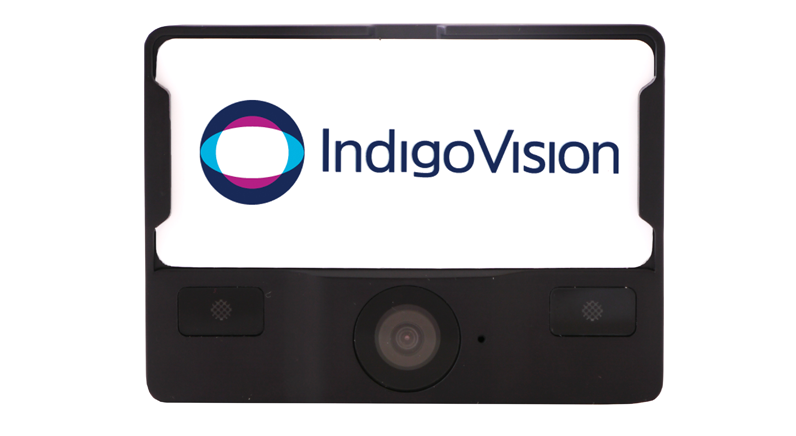
Multi-functional
To ease the burden on police officers who find themselves having to carry multiple devices, back in May, Motorola Solutions announced a new combination of body worn video camera, radio speaker and microphone, along with cloud-based digital evidence management software, which is able to communicate with TETRA digital two-way radios.
Speaking at the launch of the Si500 Video Speaker Microphone (VSM), Steve Young, Vice President for TETRA Devices at Motorola Solutions, said: “TETRA digital radio technology has become a standard for mission-critical communications. This is why we have developed a body worn video solution that collaborates with TETRA radios.”
Also from a communications perspective, it was announced in December that EE and Motorola Solutions had successfully bid for Lot 2 and Lot 3 of the Home Office-led Emergency Services Mobile Communications Programme (ESMCP). According to the Government the ESMCP is designed to deliver a cheaper and smart communications network that will enable more effective use of police, fire and ambulance resources. One example cited of how the network could, potentially, transform how the emergency services work is to facilitate the transmission of ‘live’ video from body worn cameras at crime scenes.
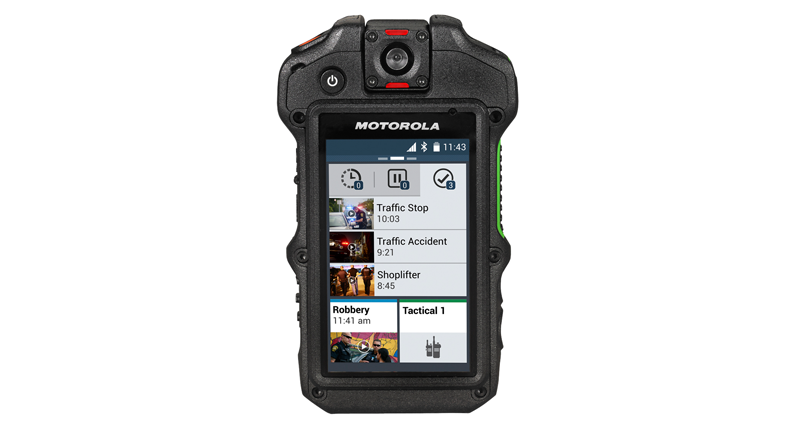
Going ‘live’
On the subject of whether the police preference is for body worn video camera footage to be recorded onto a device for later download or for remote viewing as things happen, Daniel del Soldato, Marketing Manager at Wireless WCCTV, reckons that the door is staring to open to live transmission models: “Up until now body worn cameras were valuable as a visual deterrent to protect the wearer and as a retrospective analysis tool post event. The WCCTV body worn camera – Connect – moves body worn video to its next logical stage by providing real-time transmission back to command and control teams.” Looking at the Connect model in more detail, according to WCCTV, it provides transmission of live and recorded video – up to 1080p, audio and GPS information over wireless technologies including 4G mobile technology – with fall back to 3G and GPRS) as well as long range Wi-Fi.
Intelligent streaming
Someone who also his finger on the pulse with regards to the way forward to achieve reliable video recording and secure real-time streaming for front-line law enforcement officers is Mark Patrick, Group CTO at Digital Barriers. Patrick agrees that, as things stand, most body worn cameras are what he would term  ‘a black box’ for post event analysis capability but feels that change is in the air: “We [Digital Barriers] think that there are really interesting scenarios around a streaming capability and that is where the market will eventually go but there are technical and procedural challenges.” Asked about how streaming can be implemented to send footage back to a control room, Patrick says that at the moment user activated is the primary strategy: “If I was taking a forward thinking view I would say that more of the streaming capability will, eventually, become action activated by another trigger, such as a firearm being drawn from a holster, an officer dismounting from their vehicle or related to geo-fencing when policing an event in a certain location.”
‘a black box’ for post event analysis capability but feels that change is in the air: “We [Digital Barriers] think that there are really interesting scenarios around a streaming capability and that is where the market will eventually go but there are technical and procedural challenges.” Asked about how streaming can be implemented to send footage back to a control room, Patrick says that at the moment user activated is the primary strategy: “If I was taking a forward thinking view I would say that more of the streaming capability will, eventually, become action activated by another trigger, such as a firearm being drawn from a holster, an officer dismounting from their vehicle or related to geo-fencing when policing an event in a certain location.”
Patrick goes on to explain that Digital Barriers’ streaming capability has been used by law enforcement and the military for over 12 years, particularly for covert video collection and streaming: “These are primarily static environments. There are a number of different challenges with a mobile environment including: bandwidth, the medium of transmission that is going to be used – because you have to have a radio or transmission source – and we see this as being cellular to keep the costs down.”
Ultimately, Patrick believes that body worn cameras need a transmission capability that can cope over a multitude of bandwidths and signal strengths: “That is something that we excel in being able to stream down to 10 kbps.” In practice, EdgeVis Live from Digital Barriers is specifically designed to overcome streaming over congested and low bandwidth wireless networks. According to Digital Barriers, thanks to the TVI video codec technology, video can be delivered with under a half second latency and, significantly, TVI actively monitors the bandwidth at each instant, adjusting the amount of image detail so that it never exceeds the available bandwidth.
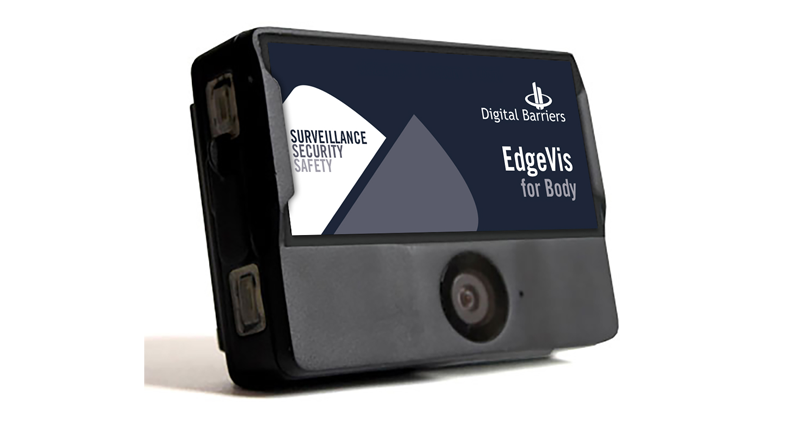
Unified platform
Of course a practical issue – and potential logistical nightmare – around body worn video is how to import and archive video content with a multitude of camera makes and models hitting the streets. This is something that Genetec has been addressing by expanding the support it offers to such devices through the Security Center, unified security platform. One vendor that recently announced that it was partnering with Genetec to integrate its body worn cameras with Security Center is Edesix: “We understand that a standalone system can be inefficient for larger security outfits which is why we have worked closely with Genetec to integrate our body worn solution to Security Center,” says Richie McBride, Managing Director at Edesix.
From a Genetec perspective, Christian Morin, Vice President of Cloud Services, believes that it is important to be able to remove the multiple silos of data that the security and law enforcement sectors currently have to deal with.
Viewing the future
So to round-up, the deployment of body worn video cameras by the police has reached unprecedented numbers as forces look to take advantage of the operational gains and ‘transparency’ that the new technology brings.
[su_button url=”https://www.securitynewsdesk.com/newspaper/” target=”blank” style=”flat” background=”#df2027″ color=”#ffffff” size=”10″ radius=”0″ icon=”icon: arrow-circle-right”]For more stories like this click here for the Security News Desk Newspaper[/su_button]






